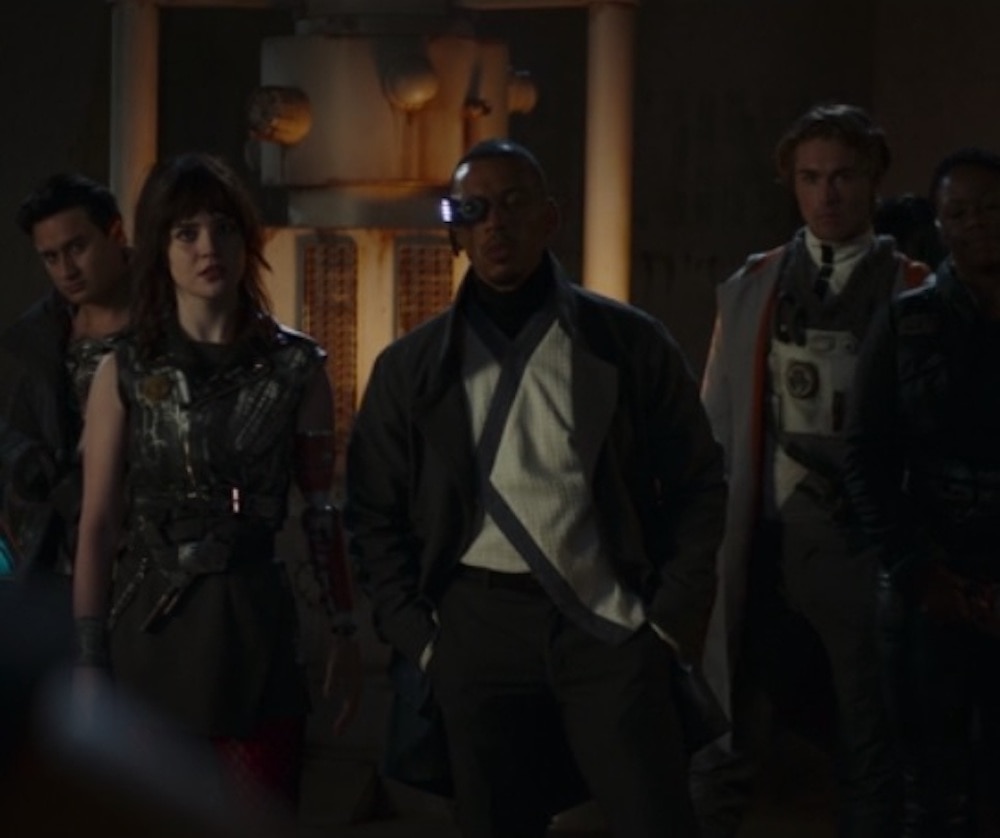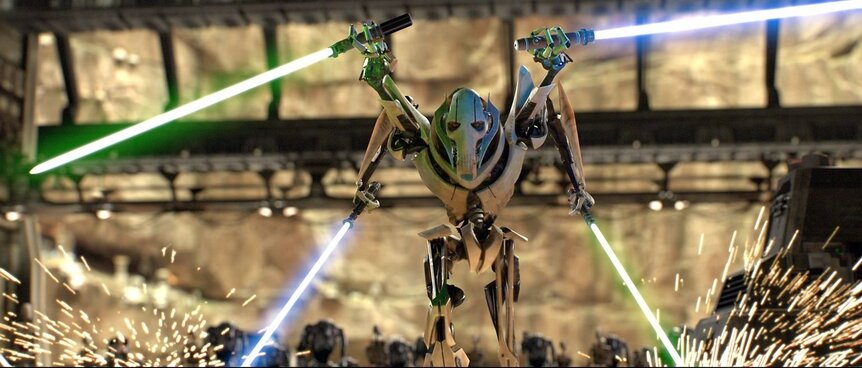Create a free profile to get unlimited access to exclusive videos, sweepstakes, and more!
Replacing limbs with droid body parts: The science behind 'The Book of Boba Fett'
Someone get us a pair of mechanical wings, stat!

Living in a galaxy far, far away isn't always easy. You've got crime syndicates, massive alien predators, and ever-shifting political machinations to navigate. Sure, there might be biological magic and laser-sword wielding space wizards, but none of that is your affair. You're just trying to scrape out a living on the planet the center of the galaxy is farthest from.
Maybe, as seen in The Book of Boba Fett, that means stealing a little water every now and again, maybe it means forming a roving hover-Vespa gang, and maybe it means fusing droid parts with your own physical form to make yourself more formidable.
Giving yourself a metal arm or a bionic eye makes you look cool, there's no debate about that. But would it actually make you better at surviving on the mean streets of Tatooine?
PROSTHETIC REPLACEMENTS
Roughly 185,000 amputations occur in the United States each year and, depending on the cause and the type of amputation, a prosthetic may be offered to replace some of the functionality lost as a result. Prosthetic technologies have improved drastically over recent decades, making them easier to use and increasing their functions, but adoption is still rather low.
In individuals with lower limb loss (one or both legs) use of a prosthetic is moderately high at about 84 percent according to one study. That same study revealed that a little more than half of upper limb amputees (ULA), approximately 54 percent, used a prosthesis. Some of that is likely a consequence of the type of work being done by the device.
It's easier to replicate walking motions with prosthetic legs than it is to duplicate the usage of a hand. Moreover, the functional loss of a lower limb might have a higher negative impact on day-to-day activities. In short, with lower limb prostheses, the costs are lower, and the benefits are higher.
Those numbers will likely change as technologies continue to improve and the benefit of upper limb prostheses become greater. In the Star Wars universe, of course, advanced droid technologies offer biological replacements which not only mimic the real thing but can exceed prior capabilities.
From Luke's robo-hand to Darth Vader and General Grievious' near total body replacements, it's clear that adoption of prosthetics in a galaxy far, far away greatly outstrip those of our noble little planet. It's also clear that the use of mechanical body parts is not limited only to the replacement of lost biological ones.
MECHANICAL ENHANCEMENT
Grievous, for his part, began life as a Kaleesh warlord. Importantly, before his time in battle robbed him of the majority of his body, he looked a lot more like a human in structure. Much like humans, the Kaleesh have two legs and two arms, not the more arachnid body plan Grievous later adopted.
Making the shift to a mostly mechanical body offered an opportunity for upgrading until he was able to wield four stolen lightsabers all at the same time.
In the same vein, though admittedly less severe in scope, the cyborg gang from The Book of Boba Fett's third episode have chosen to modify their bodies with droid parts as a way of enhancing themselves. It's possible — even likely — that the biology of sentients in the Star Wars universe differs from those of Earth but they call themselves human and they look the part, so it's likely they're operating on similar brain and body plans. The question then becomes, would your brain even know how to use additional limbs or enhanced senses it wasn't initially built for?
Surprisingly, the answer appears to be yes. At least according to a study carried out by scientists at the Institute of Cognitive Neuroscience at University College London.
In the study, participants were fitted with an artificial thumb located opposite their existing thumb on the hand. The device, dubbed Third Thumb, added an extra digit to the hand which was controlled by exerting pressure with the big toes, and asked participants to accomplish tasks which usually take two hands.
Tasks included grasping multiple balls at once or carrying an array of wine glasses. The question at the heart of the study was if the brain could learn to build a mental model of the hand with the additional digit.
After only five days of training, participants were not only able to incorporate Third Thumb into the requested tasks, but the study showed users had a sense of embodiment of the new digit. Essentially, they showed a plasticity in the brain's ability to build novel models of a person's body and incorporate changes even over short periods.
That means that in all likelihood, cybernetic gangs roaming the streets of Tatooine could indeed enhance their bodies with droid parts and quickly learn to use those enhancements as if they were their own. It also means the future of prosthetics and technological body enhancements is bright.
Good news for us. Bad news for people hiking water prices on desert planets.



























